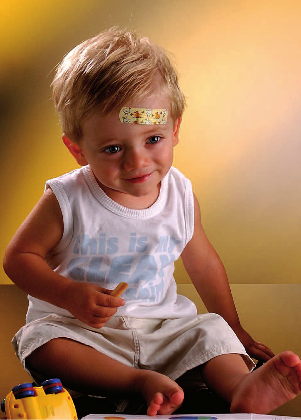Neuroendoscopy in Pediatrics
Neuroendoscopy in Pediatrics
Neuroendoscopy has been around since the beginning of the last century, however, changes in some standard neurosurgical procedures have only occurred in the last 10 years due to technological advances in imaging systems. Along with radical changes in the treatment of hydrocephalus, neuroendoscopy is becoming an alternative and effective treatment for arachnoid cysts. The first serious steps in the surgery of tumors and less significant intraventricular and vascular malformations have already been taken.
The 3.2 mm endoscope is a very useful and versatile instrument for pediatric endoscopy. Despite the very small outer diameter and due to its optical characteristics, this tool - like the larger models - is equipped with a 1 mm working channel. Thus, it is possible to carry out the same operations for which large endoscopes are usually needed, especially if minimally invasive techniques are required, for example, when operating on premature infants or during operations on small ventricles.
Ventriculostomy of the 3rd ventricle
When using this method, an anastomosis is created between the bottom of the 3rd ventricle and the basal cisterns to prevent CSF from entering the cerebral aqueduct and the fourth ventricle. This intervention makes it possible to treat obstructive hydrocephalus due to malformations resulting from stenosis of the aqueduct of the brain (atresia of the aqueduct of the brain, arachnoid cysts in the area of the quadruple cistern), tumors (posterior cranial fossa, a tumor of the epiphysis or brain stem, hematoma in the roof of the midbrain ) and impaired outflow of cerebrospinal fluid caused by bleeding or inflammation.
Septostomy
This intervention is used to open the transparent septum of the brain in monoventricular or biventricular hydrocephalus and to open the pathological septum inside the ventricle in polycystic hydrocephalus.
Marsupialization of arachnoid cysts
Neuroendoscopy allows you to open the cyst wall inside the CSF cisterns or ventricular cavities. Thus, it is possible, for example, to establish direct communication between the cyst of the temporomandibular region and the arterial circle of Willis.
Biopsy and/or resection of intraventricular lesions
If the ventricles are wide enough, then using a minimally invasive method, it is possible to achieve large lesions such as tumors and vascular malformations, especially if they are located intra- or paraventricularly. This process makes it possible to biopsy and reduce or even remove very small lesions.
Catheter guidance
With virtual ventricles or ventricles with multiple septa, neuroendoscopy allows not only placing the catheter in the desired position but also establishing communication with the Ommaya reservoir for aspiration of cerebrospinal fluid or administration of medication.
Neuroendoscopy in conjunction with neuronavigation
In combination with neuronavigation, neuroendoscopy can be used for operations in small or virtual CSF pathways and in the treatment of deep-seated cystic lesions.
Functional neurosurgery
In epilepsy surgery, functional neurosurgery allows deafferentation of the harmatoma in the area of the gray tubercle and the treatment of gelastic and/or dacristic epilepsy.
See also
- Diagnostic optics for endoscopically assisted mcroneurosurgery
- Endonasal endoscopic removal of neoplasms in the nose and paranasal cavities
- Endoscopic pituitary surgery
- Endoscopic transnasal neurosurgery
- Endoscopically assisted microneurosurgery (EAM)
- Ethmoid-pterygo-sphenoidal endoscopic approach (EPSea)
- Extended endonasal approach (EEA) in skull base surgery
- Minimally invasive microscopic surgery of the lateral skull base
- Neuroendoscope:
- Neuroendoscopy
- Neuroendoscopy in pediatrics
- Optical retractor for endoscopically assisted collection a. temporalis superficialis and cranioplasty
- Transphenoidal skull base microsurgery


